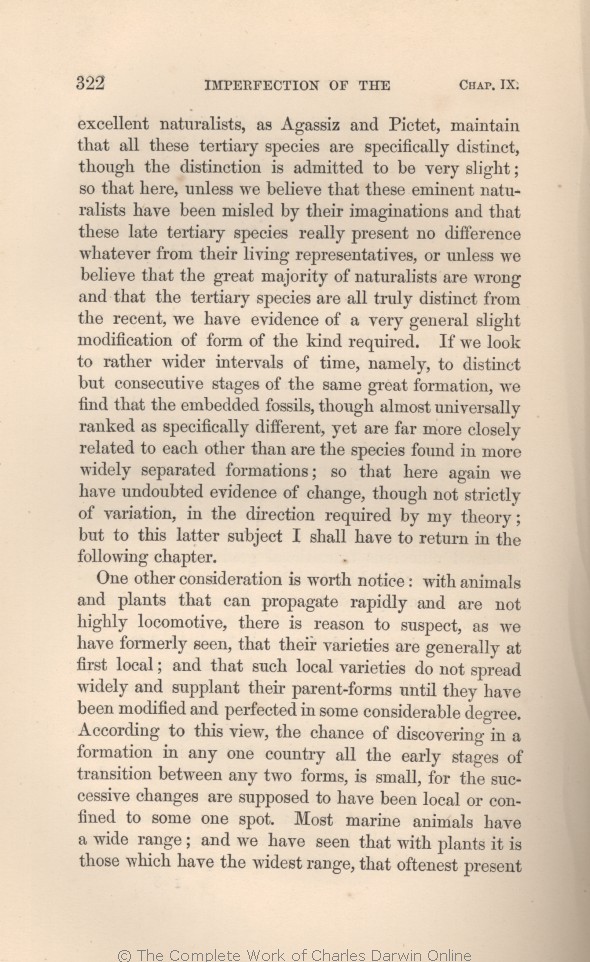excellent naturalists, as Agassiz and Pictet, maintain that all these tertiary species are specifically distinct, though the distinction is admitted to be very slight; so that here, unless we believe that these eminent naturalists have been misled by their
imaginations | imaginations 1861 | | imaginations, 1866 1869 1872 |
| believe that the great majority of naturalists are wrong and that the 1861 1869 |
| believe that the great majority of naturalists are wrong and that that the 1866 |
| admit, in opposition to the judgment of most naturalists, that these 1872 |
| a very general 1861 |
| frequent occurrence of 1866 |
| the frequent occurrence of 1869 1872 |
| modification 1861 | | modifications 1866 1869 1872 |
| form of 1861 | form of 1866 1869 1872 |
| If 1861 1866 1869 1872 | | Moreover, if 1859 1860 |
| intervals 1861 1866 1869 1872 | | intervals, 1859 1860 |
| of time, namely, 1861 1866 1869 1872 |
| namely, 1859 1860 |
| almost 1859 1860 1861 1866 1869 | almost 1872 |
| related 1861 1866 1869 1872 | | allied 1859 1860 |
| so that here again we have undoubted evidence of change, though not strictly of variation, 1861 1866 |
| but to this subject I shall have to return 1859 1860 |
| so that here again we have undoubted evidence of change 1869 1872 |
| direction required by my theory; but to this latter subject I shall have to return in the following 1861 1866 |
| following 1859 1860 |
| direction required by the theory; but to this latter subject I shall have to return in the following 1869 |
| direction required by the theory; but to this latter subject I shall return in the following 1872 |
|
|
One other consideration is worth notice: | One other consideration is worth notice: 1859 1860 1861 |
| OMIT 1866 1869 1872 |
| with 1859 1860 1861 | | With 1866 1869 1872 |
| can 1859 1860 1861 | can 1866 1869 1872 |
| are 1859 1860 1861 | | do 1866 1869 1872 |
| highly locomotive, 1859 1860 1861 | | wander much, 1866 1869 1872 |
| forms, 1859 1860 1861 1872 | | such forms, 1866 1869 |
|









